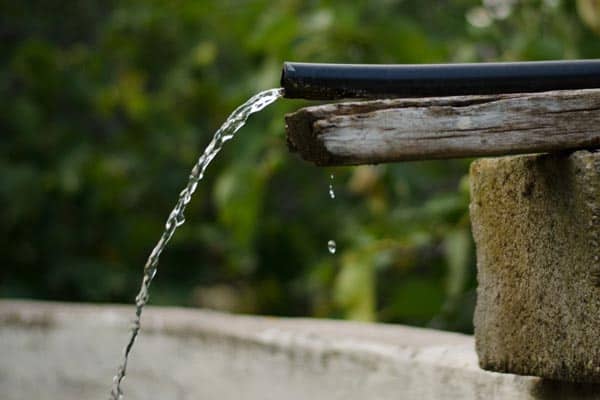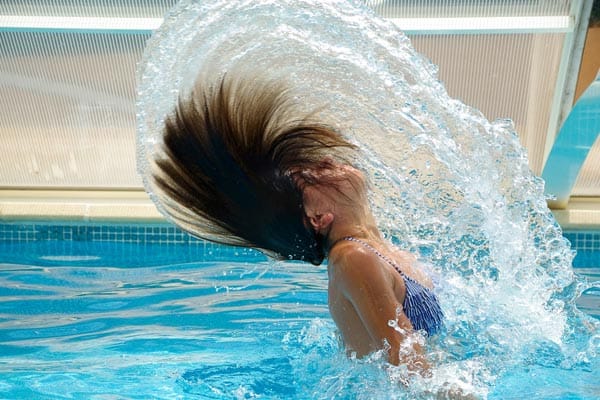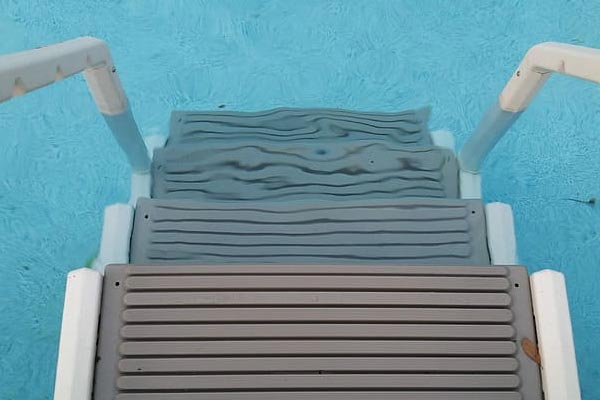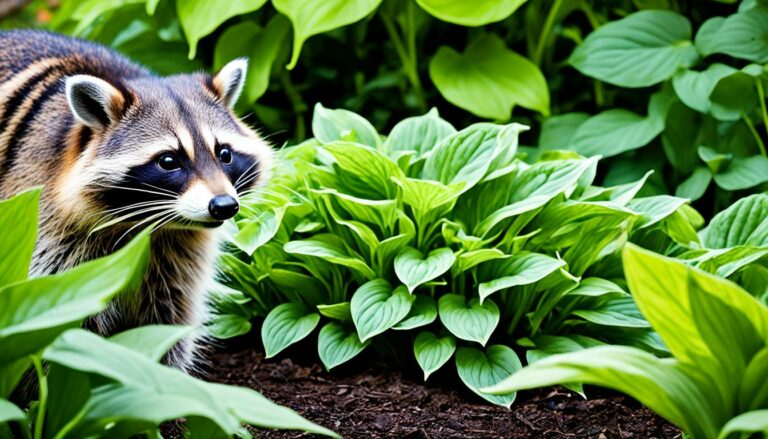How to Stop Water Runoff From Your Neighbor’s Yard and Protect Your Property
Dealing with water runoff from a neighbor’s property can be a very frustrating experience, and the truly frustrating part is that your neighbor could be responsible for any damage to your property due to the runoff.
This is what happens when your home is in close proximity to someone else, and you have to learn how to block water drainage from your neighbor’s yard.
To prevent water runoff that could cause damage to your property, you have to provide the flowing water with a diversion.
Also, you’ll have to slow down the water that’s coming into your yard so that the water will eventually sink into your soil without overloading it.
Although this seems like a tall order, you can do it in a few days, depending on the level of runoff you have.
Stopping the water from coming in and flooding your yard requires a lot of hard work on your part, and it can get expensive. However, it’s not impossible.
We’re going to go over several solutions you can try to help with your runoff, including installing drains, manual labor, and potentially looking into legal advice.
Three Ways to Stop Water Runoff From Your Neighbor’s Yard
Below are three ways you can try to see which one stops the water from flowing into your yard. Not all of them may work well for you, so it may take more than one try before you stop the runoff.
1. Build a Berm
A berm is a large amount of soil, and it’s a very common feature in landscaped yards while also working to prevent water from reaching your home. You can plant grass, flowers, shrubbery, or other vegetation on a berm to enhance how it looks, but the primary purpose of this berm is to stop water from getting to any area of your home or yard you wish to protect.
Before you build your berm, you’ll want to measure off where the water goes when it runs into your yard. You can also consider which types of plants you want to grow in this location, so it looks like a natural part of your landscape.
The grass is a good substitute because it’s easier to maintain, but you have a broad range of native plants that work well too. Here are a few things to consider when you build your berm:
- Start small and add more soil as needed.
- Make sure you plan out how you want the water to flow before building it. You could stop it from reaching certain areas of your yard only to direct it to a place that will cause more damage.
- Many homeowners make their berms circular. However, C-shaped berms can typically work much better to divert water.
- Carefully compact your soil because one bad storm can destroy it.
- If you’re adding plants, pick ones that prefer drier environments.
2. Route the Runoff to a Dry Well
If you want to stop runoff from coming into your property, setting up a dry well is a great way to avoid it. Dry wells will create an underground environment where the water can safely gather without causing damage.
However, creating one requires hard work and time, but it’s one of the most effective solutions. It collects water from the soil and runs it through a downspout right into the dry well.
Most home and garden stores have dry wells available to buy, but you want to make sure that whatever one you pick out is simple to install and durable.
After you install it, you’ll have to make a point to check on it to see if there are any clogs due to sediment debris and clear them out.
The tank won’t drain well with a lot of debris, and it can actually cause you to repair or replace the well if the buildup gets bad enough. So, you want to remove the debris regularly.
3. Set up a French Drain
A French drain or catch basin is another way to prevent water from flowing into your yard from your neighbor’s yard, and it’s a linear structure that uses piping and gravel to transfer the water from the top of a slope downward.
It’s a great defense to have in place to protect against water damage and drainage from both storms and your neighbor’s yard. Here are a few things to consider about using this method:
- Plan out where you want to put this drain very well. This installation project could involve breaking up the gravel you’ll put inside it.
- You’ll have to consider where you want to put the dirt you unearth. If the soil is good, it’ll work well in a small garden
- Hard digging can be extremely hard and time-consuming. If possible, try to get a team together to help.
With a little help and the correct tools, installing this drain isn’t too difficult. Before you start digging the drain, you want to reach out to your utility provider and have them map out any pipes below your property. You don’t want to accidentally burst a water pipe and flood the yard even more.
Factors that Affect Water Runoff Into Your Yard
You Live at the Bottom of a Hill or Slope
If your home is at the bottom of a slope or a hill, it’s more likely that water will eventually trickle down from your surrounding neighbors.
If the neighbor’s home has a flooding problem, some of the water can get to your yard and cause damage. However, having one of the three methods we outlined earlier in place helps prevent this from happening.
Severe Weather
A massive rainstorm could easily soak your lawn, and adding more water from your neighbor’s lawn won’t help you.
This is why it’s essential to have the right structures in place to divert the extra water away from already wet and vulnerable areas in your yard.
Your Neighbor Changes Their Landscape
Any time the neighbor decides to change up their landscape, it can negatively impact your yard with flooding.
If the previous design diverted water from your home but they removed it, the water is now free to flow directly at you.
There isn’t a lot you can do to stop your neighbors from changing their landscape, but you can put preventative measures in yours.
Effects of Water Runoff
Having too much water directly around your property isn’t a good thing. The soil will soak up a decent amount of water; if it leaves any water pooling, this can cause problems. Here are a few effects of water runoff you should be aware of:
Drowns Your Grass and Plants
It’s much more difficult to keep your lawn looking neat and lush, especially if you have a host of flower beds and plants scattered around.
Having too much water on your property can drown the grass and plants, and this wastes all of your efforts.
If you want to protect these areas in your yard, you should drain the water as soon as it floods to avoid overwhelming anything.
Paradise for Pests
When your yard has a water problem, and you have standing pools that are slow to dry up, it becomes a breeding ground for mosquitoes, flies, and other pests.
These pets can eventually get into your home, so keeping your yard dry is one way to lower the number of pests both inside and outside of your property.
Slippery Lawn
When your grass gets soaked from constant water runoff, the surfaces get potentially dangerous because they get slippery.
People can easily injure themselves by slipping and falling as they walk across it, so you want to avoid this happening if at all possible.
What to do if the Neighbor’s Water Runoff Floods Your Property
Try not to panic if runoff from a neighbor’s yard floods your property. The situation may seem like a huge deal at first because it’s a relatively quick and easy fix.
There are a few ways you can go about fixing it, and the following tips can help you navigate it even more:
- Plants are usually a surprisingly large help when it comes to stopping water from reaching other areas of your home. They can help block excess water as it comes along, and they can absorb a decent amount of it. Plants also help to filter out pollutants and other hazardous materials in the water.
- Make a point to take good care of your soil. Unhealthy soil won’t do a good job at absorbing the excess moisture, and you want to consider mulching it if it’s dry.
- If your home is built on a slope, it’s important that stack soil to help divert the water from your home or yard. You can enlist professional help if you don’t want to tackle it on your own.
- Trees are one of the biggest things you can have to help prevent flooding. Keep all of your trees in good health because they can soak up a huge amount of excess water.
Is it Possible to Sue for Damage Due to Water Runoff?
When you’re trying to figure out who is responsible for the water runoff, there are two big factors to consider.
If the flooding results from an act of God with storms, it’s not a good idea to try and sue. However, if your neighbor should do something that creates excess water runoff and flooding on your property, you could have grounds for legal action.
Anyone who has property damage and constant flooding due to water runoff from a neighbor’s property could contact an attorney for legal advice.
However, this could create a lot of tension with your neighbor, so seeking legal advice should be a last resort. If you do go to a lawyer, make sure they inspect your insurance policy to see if it’ll help coverage damage.
Bottom Line
Dealing with constant water runoff can be very frustrating, and it’s a time-consuming project to complete. It can also create a huge amount of damage to your home.
However, there are several solutions you can employ to prevent the water from soaking your yard, killing your plants, and destroying parts of your home.
We’ve outlined a few solutions for you, but you can always contact a professional for further assistance.






